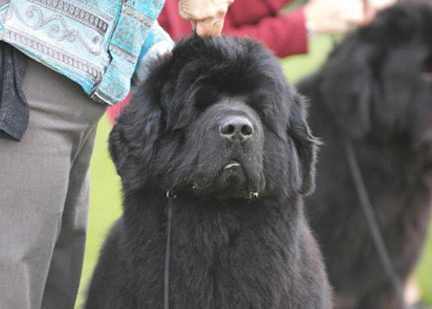"The Newf’s history of water rescue and draft work demands strength, but certainly not speed. Newfoundlands are the Clydesdale horses of the dog world and, like the draft horse, should excel in endurance. They should be massive-boned and big-chested. Speed favors a lighter built, more rangy type animal - not desirable characteristics in a Clydesdale or a Newfoundland."- May Bernhard
"The Breed Standard states: “The adult Newfoundland has a flat, water resistant, double coat that tends to fall back into place when rubbed against the nap. The outer coat is coarse, moderately long and full, either straight or with a wave. The undercoat is soft and dense, although it is often less dense during the summer months or in warmer climates. Hair on the face and muzzle is short and fine. The backs of the legs are feathered all the way down. The tail is covered with long dense hair. Excess hair may be trimmed for neatness.” There is a reason the Newfoundland coat to be so described. How could our dogs survive in the northern Atlantic Ocean with a coat that allows cold water to contact the skin? Those who compete is dog shows must never forget that the Newfoundland is a working dog. Look at your dog after a swim. Does he dry off immediately, or is he soaked to the skin? Remember that all the grooming in the world cannot change a bad dog into a good one and that grooming is not reproduced in the whelping box. Look under the coat to see how the dog is really structured.” - Mary Dewey

